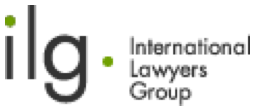Spouse. Child. Parent. Issue. With the exception of the term issue, these are terms to which we ascribe meaning in our day-to-day lives. These are also specifically defined terms in legislation, and they are terms that come up when working with an estates lawyer, for example when drafting a Will.
My colleague, Patricia Gordon, in a previous blog post discussed the All Families Are Equal Act (Parentage and Related Registrations Statute Law Amendment), 2016 (the “Act”) which was passed by the Ontario government, and which amends various pieces of legislation. These amendments resulted in changes to the Succession Law Reform Act (Ontario) and, therefore, the Act has estates law implications. Estate planners, for example, will need to factor in these changes when assisting someone in drafting his or her Will(s).
The Act takes into account that a child can now, as a result of advancements in reproductive technology, be post-humously conceived. Pursuant to the Act, a “spouse” is defined as “the person to whom a person is married or with whom the person is living in a conjugal relationship outside marriage” and the term “child” is defined to include,
(a) a child conceived before and born alive after the parent’s death, and
(b) a child conceived and born alive after the parent’s death, if the conditions in subsection 1.1 (1) are met; (“enfant”)
In addition, the definition of the term issue is amended to include:
(a) a descendant conceived before and born alive after the person’s death, and
(b) a descendant conceived and born alive after the person’s death, if the conditions in subsection 1.1 (1) are met;
In order for a descendant conceived and born alive after the parent’s/person’s (as the case may be) death to qualify as a “child” or under the definition of “issue”, the following conditions must be met:
- The person who, at the time of the death of the deceased person, was his or her spouse, must give written notice to the Estate Registrar for Ontario (“Notice”) that the person may use reproductive material or an embryo to attempt to conceive, through assisted reproduction and with or without a surrogate, a child in relation to which the deceased person intended to be a parent.
- The Notice must be given no later than 6 months after the deceased person’s death in the form provided by the Ministry of the Attorney General. A copy of the form can be found at http://ontariocourtforms.on.ca/en/succession-law-reform-act-forms/-/. The form requires the surviving spouse to provide information regarding him or herself as well as the deceased spouse.
- The posthumously-conceived child must be born no later than the third anniversary of the deceased person’s death, or such later time as may be specified by the Superior Court of Justice.
- A court has made a declaration under section 12 of the Children’s Law Reform Act establishing the deceased person’s parentage of the posthumously-conceived child. This declaration may be obtained by application to the court after the child is born and, unless the court orders otherwise, no later than 90 days after the child’s birth.
In order for the declaration of parentage to be made, certain conditions must be met. One such condition is that the deceased person must have consented in writing to be, together with the applicant, the parents of a child conceived posthumously through assisted reproduction, and did not withdraw the consent before his or her death. There is an additional condition which takes into consideration a child born to a surrogate.
The Act defines terms such as “assisted reproduction”, “embryo”, “reproductive material” and “surrogate”.
As, over time, the manner in which families are formed changes and advancements in reproductive technology alter how people plan for the future, people will need to take into consideration how this may impact their estate plan. Families will not only be thinking about children they may conceive prior to their death, but also whether they would like to leave open the ability for a child conceived after their death to be considered a descendant.
Given that the Notice must be submitted no later than 6 months following the date of death, a surviving spouse will need to think through whether there is a chance he or she may, as the form of the Notice provides, “use reproductive material or an embryo to attempt to conceive, through assisted reproduction and with or without a surrogate, a child in relation to which [the deceased spouse] intended to be a parent”. The ability to file such a form will inevitably effect the estate administration process.

 2 St Clair Ave West
2 St Clair Ave West


